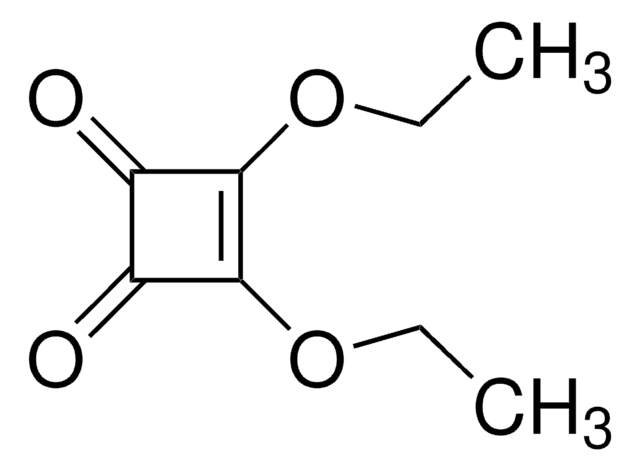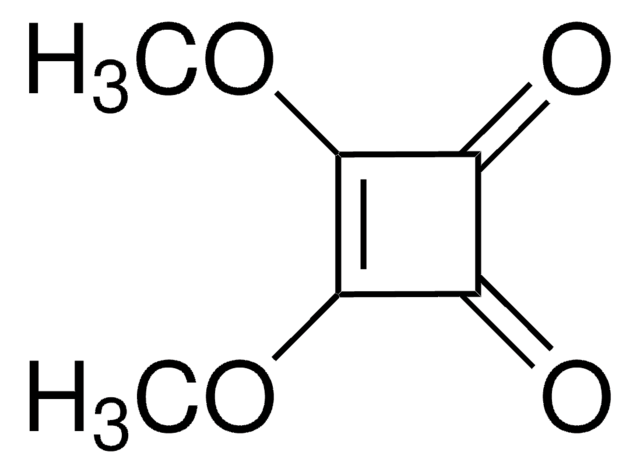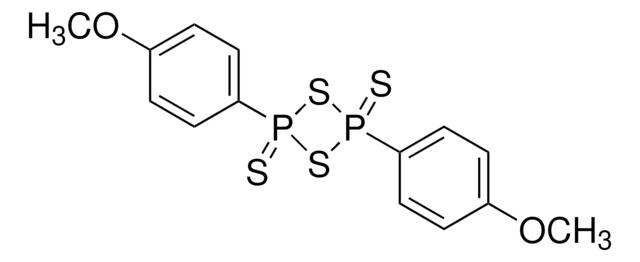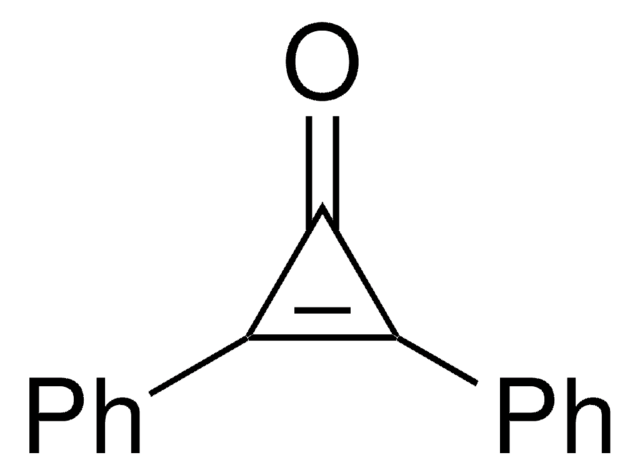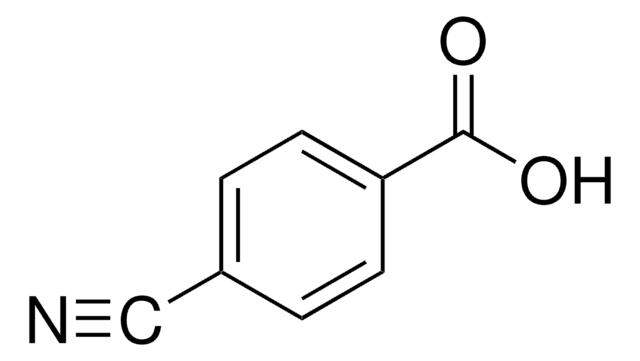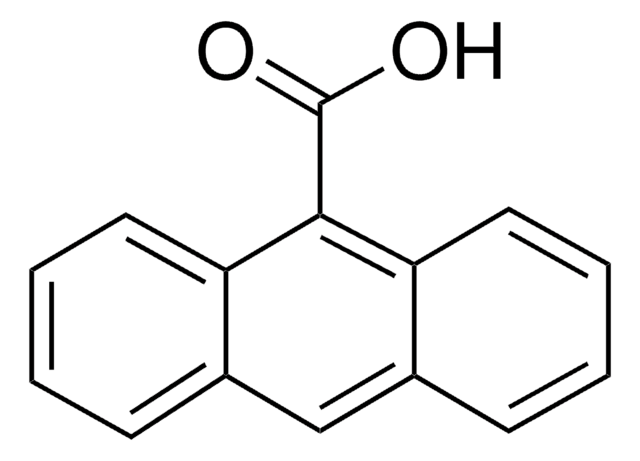Kluczowe dokumenty
339792
3,4-Dibutoxy-3-cyclobutene-1,2-dione
98%
Synonim(y):
Dibutyl squarate
About This Item
Polecane produkty
Poziom jakości
Próba
98%
Formularz
liquid
współczynnik refrakcji
n20/D 1.494 (lit.)
bp
139 °C/0.5 mmHg (lit.)
gęstość
1.047 g/mL at 25 °C (lit.)
grupa funkcyjna
ether
ketone
ciąg SMILES
CCCCOC1=C(OCCCC)C(=O)C1=O
InChI
1S/C12H18O4/c1-3-5-7-15-11-9(13)10(14)12(11)16-8-6-4-2/h3-8H2,1-2H3
Klucz InChI
XBRWELTXMQSEIN-UHFFFAOYSA-N
Powiązane kategorie
Opis ogólny
Zastosowanie
Hasło ostrzegawcze
Warning
Zwroty wskazujące rodzaj zagrożenia
Zwroty wskazujące środki ostrożności
Klasyfikacja zagrożeń
Eye Irrit. 2 - Skin Irrit. 2 - Skin Sens. 1 - STOT SE 3
Organy docelowe
Respiratory system
Kod klasy składowania
10 - Combustible liquids
Klasa zagrożenia wodnego (WGK)
WGK 3
Temperatura zapłonu (°F)
235.4 °F - closed cup
Temperatura zapłonu (°C)
113 °C - closed cup
Środki ochrony indywidualnej
Eyeshields, Faceshields, Gloves, type ABEK (EN14387) respirator filter
Wybierz jedną z najnowszych wersji:
Masz już ten produkt?
Dokumenty związane z niedawno zakupionymi produktami zostały zamieszczone w Bibliotece dokumentów.
Nasz zespół naukowców ma doświadczenie we wszystkich obszarach badań, w tym w naukach przyrodniczych, materiałoznawstwie, syntezie chemicznej, chromatografii, analityce i wielu innych dziedzinach.
Skontaktuj się z zespołem ds. pomocy technicznej